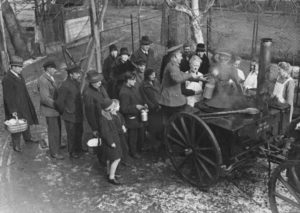A Short History of the Iron Foundry in America: The Great Depression
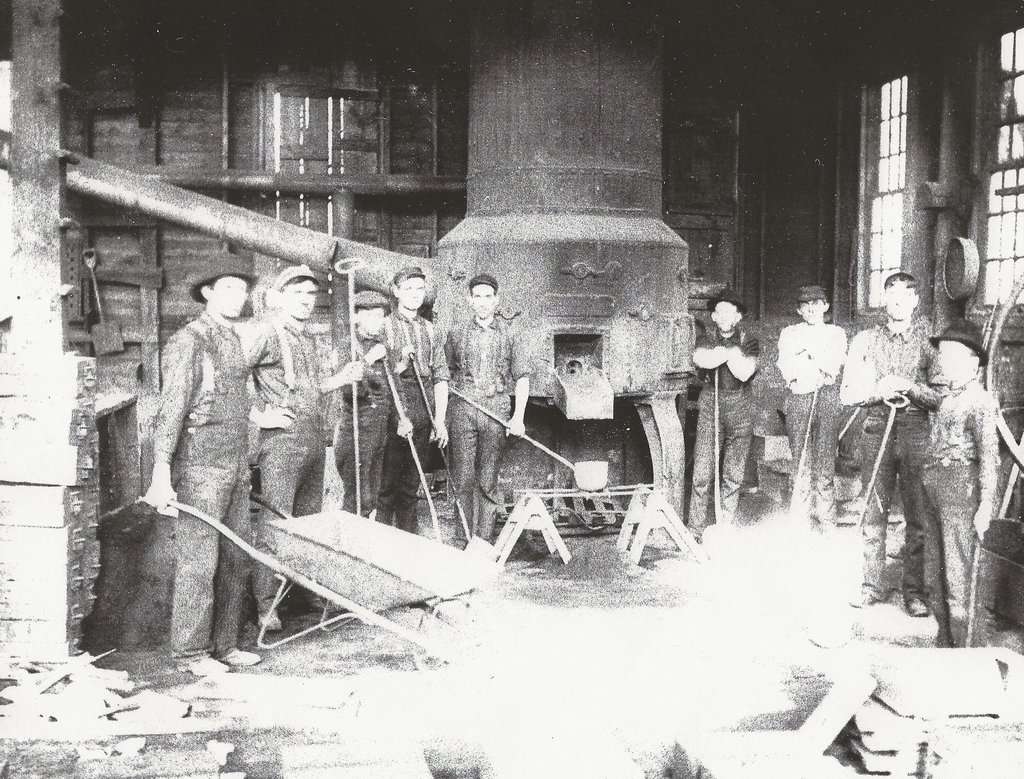
The Iron Foundry Industry Enters the 1920s in Style.
The 1920s was a period of unparalleled prosperity for the iron foundry industry and American business. But those quick gains were followed by bigger losses that would threaten the survival of even well-established companies.
The Economy Booms as the War Ends
The period immediately after the first World War was one of tremendous prosperity for American businesses. Much of continental Europe was in shambles. The physical devastation was enough: bombed-out factories, transportation lines destroyed, and whole villages wiped from existence. What was worse was the decimation of an entire generation of young men. Not only was the workforce cut in half, but the emotional and mental toll it took on the population was unmeasurable. Even Great Britain, which was the least affected country in terms of physical destruction, still felt the emptiness left by so many of her young men dying. To make matters worse, all of the European nations that were in the war were heavily in debt.
The United States, having come into its own as a growing world power, was not affected by the destruction of World War I. Although the US suffered over 116,000 deaths in the war, that number paled in comparison the deaths of nearly 888,000 English soldiers, almost 1,398,000 French, and approximately 2,254,000 Russians. With an intact infrastructure and abundant natural resources, the US was in the perfect position to experience an economic boom.
The Roaring 20s
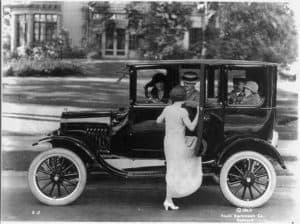 The Gilded Age of the turn of the century was reinvigorated. American business was booming and the money was flowing in like never before. Many people had already been moving into the cities to take advantage of higher wages and increased amenities. The population of urban centers like New York City doubled between 1900 and 1930. In NYC the population skyrocketed by over 2 million people between the two world wars.
The Gilded Age of the turn of the century was reinvigorated. American business was booming and the money was flowing in like never before. Many people had already been moving into the cities to take advantage of higher wages and increased amenities. The population of urban centers like New York City doubled between 1900 and 1930. In NYC the population skyrocketed by over 2 million people between the two world wars.
The average household income more than doubled between 1914 and 1924. With the increased income and the exposure to more sophisticated banking, more people than ever before were participating in the stock market. The growing banks were driven by ambition to relax their standards to encourage more investments. Lending was out of control as the economy heated up. Warnings by experts did little to slow things down. Warning signs that the economy was top-heavy began to grow.
Meanwhile in Europe
The collective anger and bitterness left by World War I was taken out on the Central Powers after their defeat. The diplomats who were tasked with delivering a peace treaty were not up to the task. They foolishly handed down one of the most punitive documents in history. The Austrian Empire was torn apart and parcelled out to its individual ethnic groups. The Ottoman Empire dissolved into a separate conflict that would rage on for years after the war. It would cease to exist in 1924 after a revolution abolished the imperial government in favor of a republic. Germany was saddled with significant reparations, forced to give up approximately 13% of its European territory, and stripped of its overseas colonies. The Alsace-Lorraine region was returned to France and parts of western Prussia and the Silesia area was given to Poland.
The sanctions were so overwhelming that the German government struggled to repay their debts and the German economy faltered. Hyper-inflation devalued the Deutschmarke and German towns and cities were hard-pressed to rebuild essential infrastructure. This had a substantial effect on the economy of the rest of Europe. Slowly the countries that saw the most fighting began to rebuild. But the loss of so many people in such a short period of time, coupled with the loss of roads, buildings, and factories slowed their progress substantially.
This was a boost to the American economy, however. The American cities and factories were already in full gear to support the war effort. That was nothing compared to the amount of goods and services provided to Europe after the war. Until European could rebuild, many things were manufactured and shipped over to Europe.
The World Economy Crashes
Slowly the effects of the sanctions and gross mismanagement of the German economy spilled over into the rest of the world. Even the Roaring 20s of American industry failed to remain immune. Poor judgement led to many companies to over-extend themselves. In October, 1929, the New York Stock Exchange fell 11%. This created an economic downturn that would wipe out 89% of the US market value over the course of two years. Bank failures evaporated $550, 000 in deposits. The collapse of the American economy spread like a shock wave across the entire world economy. The German Reichsbank stumbled, losing 840,000 Marks in four days. US President Herbert Hoover called for a temporary halt to German reparations, which stabilized the German economy but hurt the French economy. The Germans, feeling vulnerable due to severe restrictions on their military and bitter about the heavy debt that they were required to pay back, had already begun to secretly rebuild their military. Soon the National Socialist political party came under the influence of a young Austrian named Adolf Hitler.
American industry struggled during the worldwide economic depression that followed the NYE stock crash in 1929. The iron foundry industry was not immune. However, the iron industry was at the core of the recovery efforts, so it was one of the first to begin to rebound. At first the fate of the iron foundry didn’t look like it was going to be much different from the rest of the economy. Layoffs and falling wages were seen even in the Southeast, which was the least impacted.
A Rebound for the Iron Foundry Industry
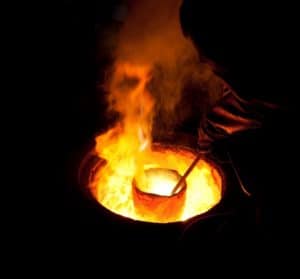 But as the government invested in public works projects and big businesses began to restructure and expand, the iron foundries found their footing. As the concerns in Europe increased, the foundries came into high demand. Countries began to focus their own foundries on producing armaments for a potential conflict, the American foundries filled the gap for other goods. American politicians, military commanders, and businessmen also watched the situation in Europe with growing concern. This spurred investment in building military machines, armaments, naval ships, and military aircraft to protect the United States in case the hostilities across the ocean drew the US into another war.
But as the government invested in public works projects and big businesses began to restructure and expand, the iron foundries found their footing. As the concerns in Europe increased, the foundries came into high demand. Countries began to focus their own foundries on producing armaments for a potential conflict, the American foundries filled the gap for other goods. American politicians, military commanders, and businessmen also watched the situation in Europe with growing concern. This spurred investment in building military machines, armaments, naval ships, and military aircraft to protect the United States in case the hostilities across the ocean drew the US into another war.
Having a good financial plan is the cornerstone to any strong business. There were many foundries that failed during the stock market crash and the Great Depression that followed. Those foundries or the businesses that owned them had overextended themselves and hadn’t planned for the future. This is still an issue almost a hundred years later. There are still iron foundries that do not plan well for the future and find themselves stranded when the economy takes a turn for the worst.
Willman Does Business Better
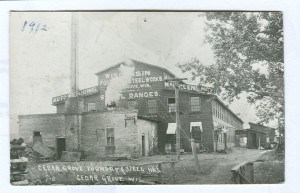 The iron foundry in Cedar Grove, Wisconsin had weather many economic challenges and downturns. Willman Industries, owner of this proud foundry since 1987, has worked hard to make sure that we will stand the test of time. Todd Willman, our president and CEO, likes to call Willman Industries a “safe haven foundry.” Todd Willman stated several years ago:
The iron foundry in Cedar Grove, Wisconsin had weather many economic challenges and downturns. Willman Industries, owner of this proud foundry since 1987, has worked hard to make sure that we will stand the test of time. Todd Willman, our president and CEO, likes to call Willman Industries a “safe haven foundry.” Todd Willman stated several years ago:
“We make our living as a safe-haven foundry, providing highly engineered, high-quality castings with high levels of service. Most of our business has come to us because our competition could not make the quality or because our competition simply went out of business. Since Clay Willman bought the foundry in 1987, we have been profitable every year because we make our decisions based on what is best for the foundry for the next 40 years.”
You Have a “Safe Haven” with Us
What is a “safe haven foundry”? Being a “safe haven foundry” means that we are committed to principles and practices that will allow us to remain in business for the long-run. Willman Industries is one of few iron casting foundries to stay debt-free and actually grow in the recent years of recession. There is a reason new customers approach Willman Industries almost every day. It’s because those new clients know Willman Industries is a no-risk choice to manufacture their iron castings.
Find out what Willman can do for your company. Call us today for a free consultation and quote!

